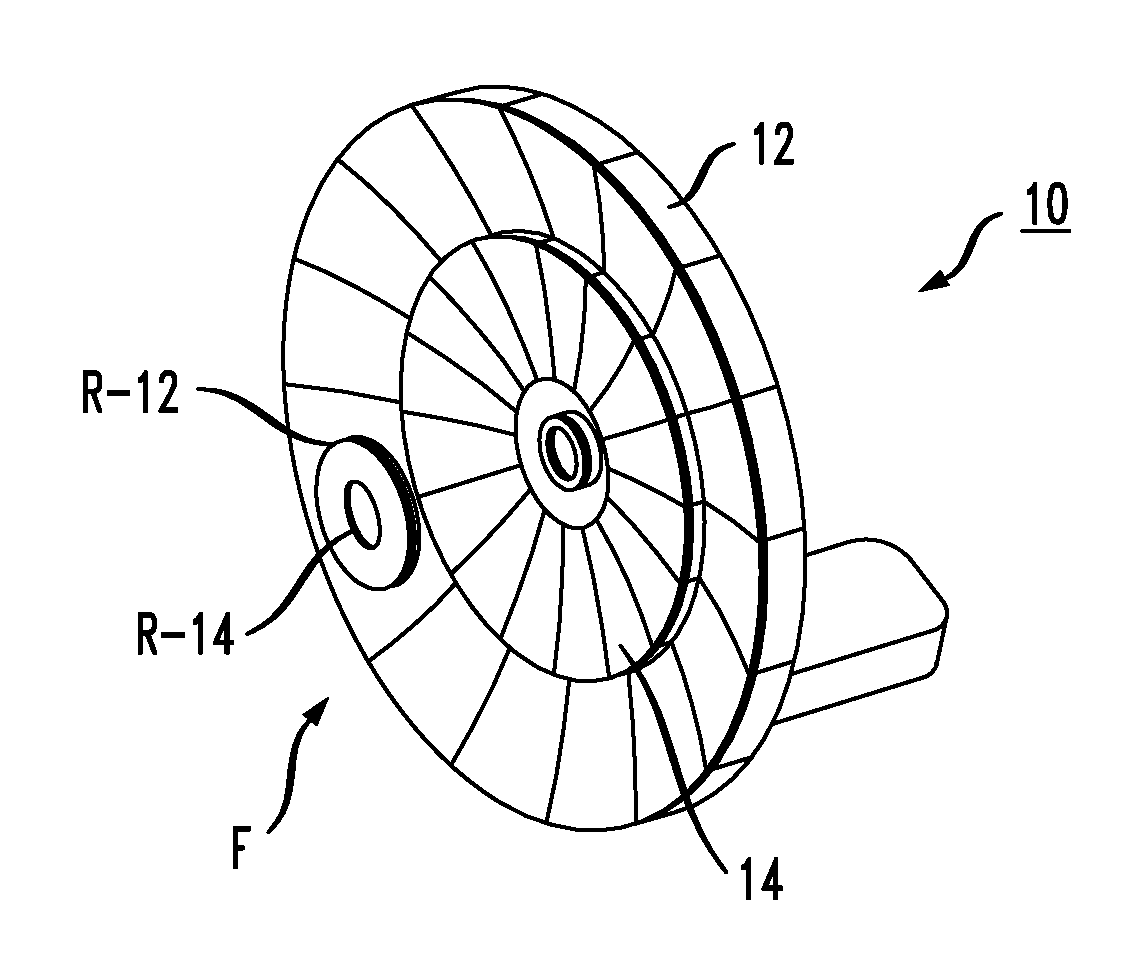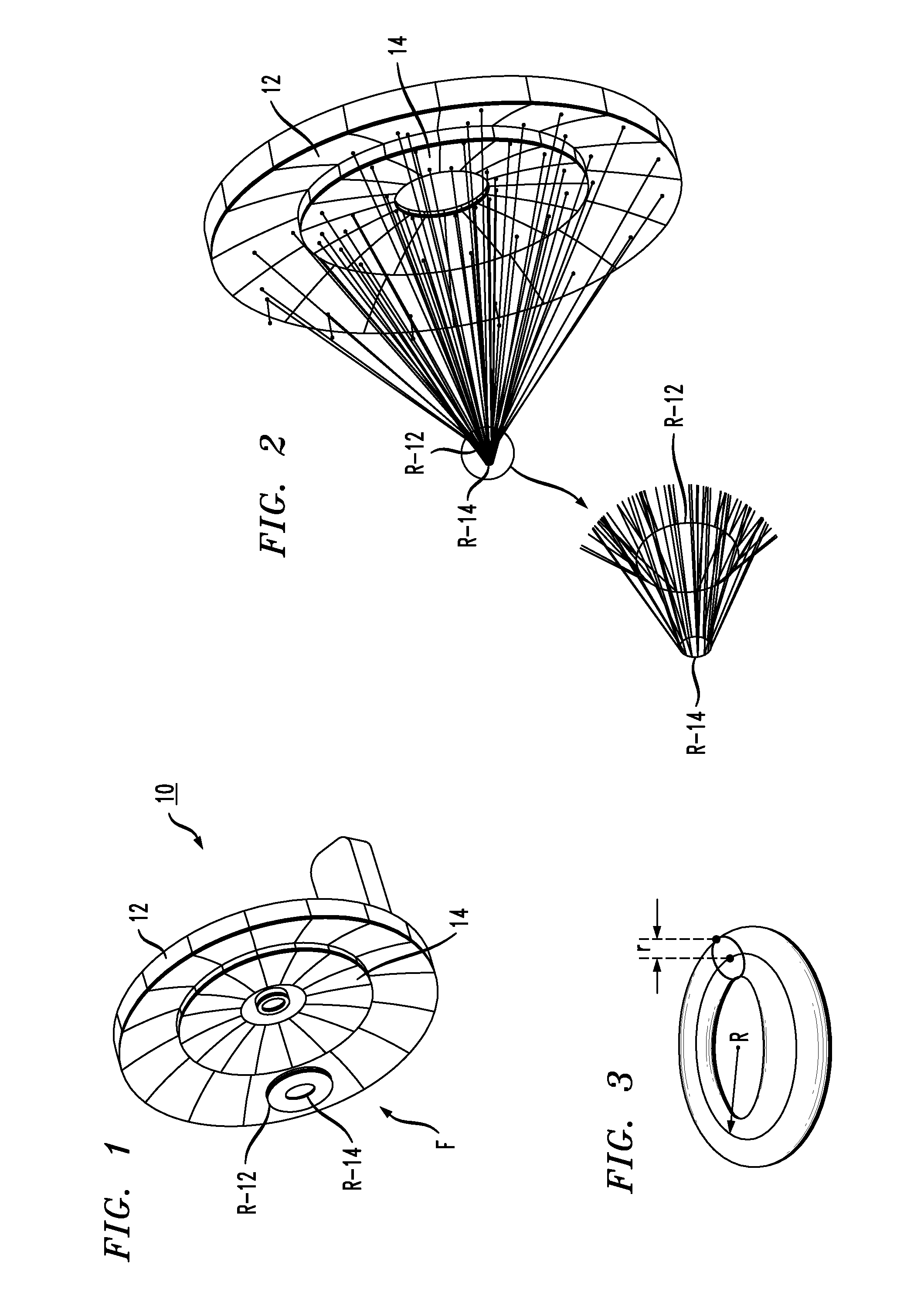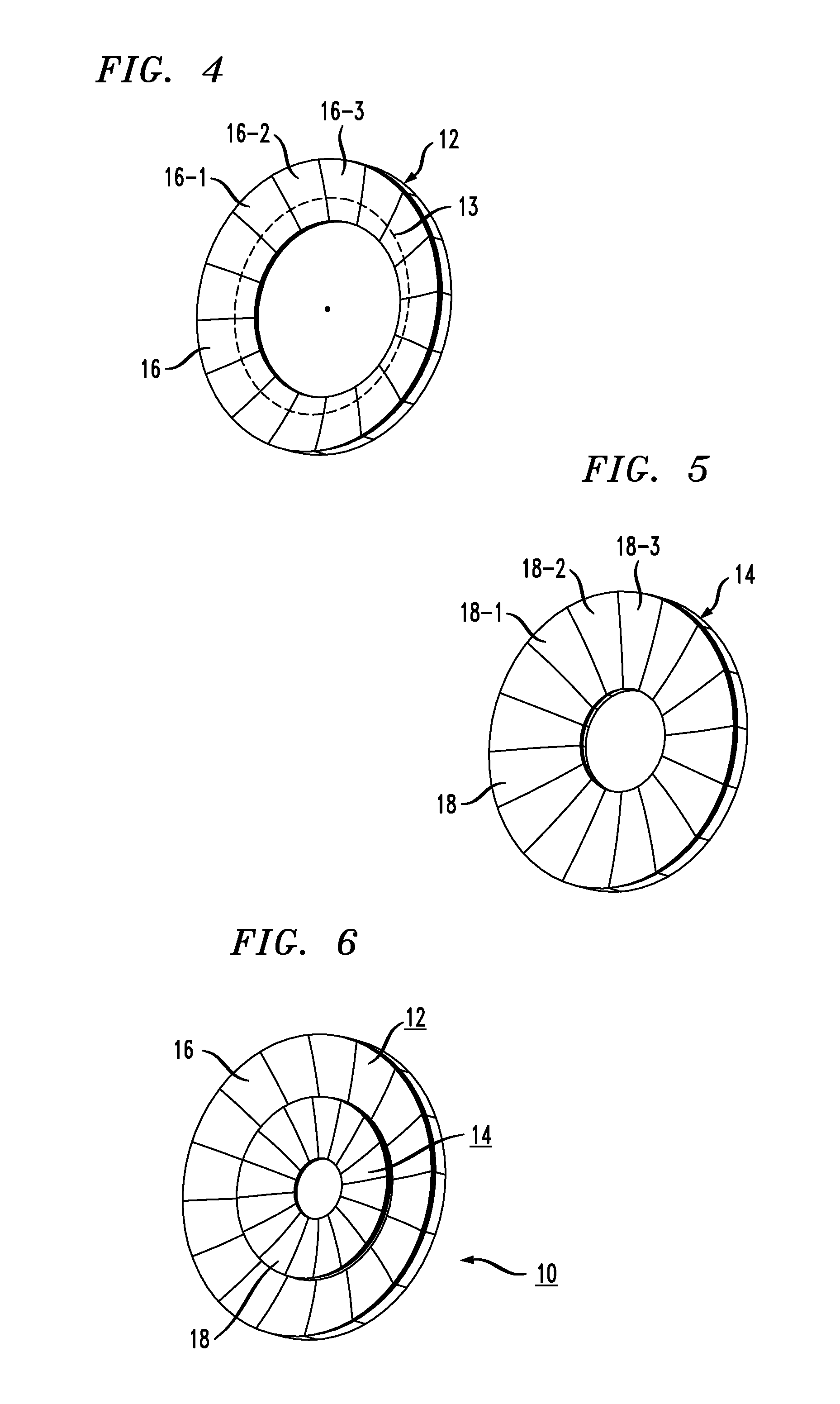Solar Concentrator Configuration With Improved Manufacturability And Efficiency
a solar concentrator and configuration technology, applied in the field of solar concentrators, can solve the problems of high manufacturing and installation costs, low passive solar radiation intensity, and inability to directly use most applications, and achieve the effect of reducing the weight, complexity and cost of the final solar concentrator structur
- Summary
- Abstract
- Description
- Claims
- Application Information
AI Technical Summary
Benefits of technology
Problems solved by technology
Method used
Image
Examples
Embodiment Construction
[0031]FIG. 1 is an isometric view of an exemplary solar concentrator 10 formed in accordance with the present invention. Unlike prior art solar concentrator arrangements based on creating “point” or “line” concentration of the solar radiation, the spindle toroid geometry of the inventive concentrator functions to direct the reflected solar into ring-like regions at the focal area F of concentrator 10. As mentioned above, the ring-like focal area provides a greater concentration of energy than the “line” focus associated with the prior art trough collectors, without requiring the expensive alignments associated with the prior art “point” focus associated with the prior art dish collectors.
[0032]In particular, solar concentrator 10 is shown as comprising a pair of concentric reflectors including an outer reflector 12 and an inner reflector 14, where each reflector is formed of the spindle toroid geometry. As mentioned above, the use of a pair of reflectors is considered to be exemplar...
PUM
 Login to View More
Login to View More Abstract
Description
Claims
Application Information
 Login to View More
Login to View More - R&D
- Intellectual Property
- Life Sciences
- Materials
- Tech Scout
- Unparalleled Data Quality
- Higher Quality Content
- 60% Fewer Hallucinations
Browse by: Latest US Patents, China's latest patents, Technical Efficacy Thesaurus, Application Domain, Technology Topic, Popular Technical Reports.
© 2025 PatSnap. All rights reserved.Legal|Privacy policy|Modern Slavery Act Transparency Statement|Sitemap|About US| Contact US: help@patsnap.com



